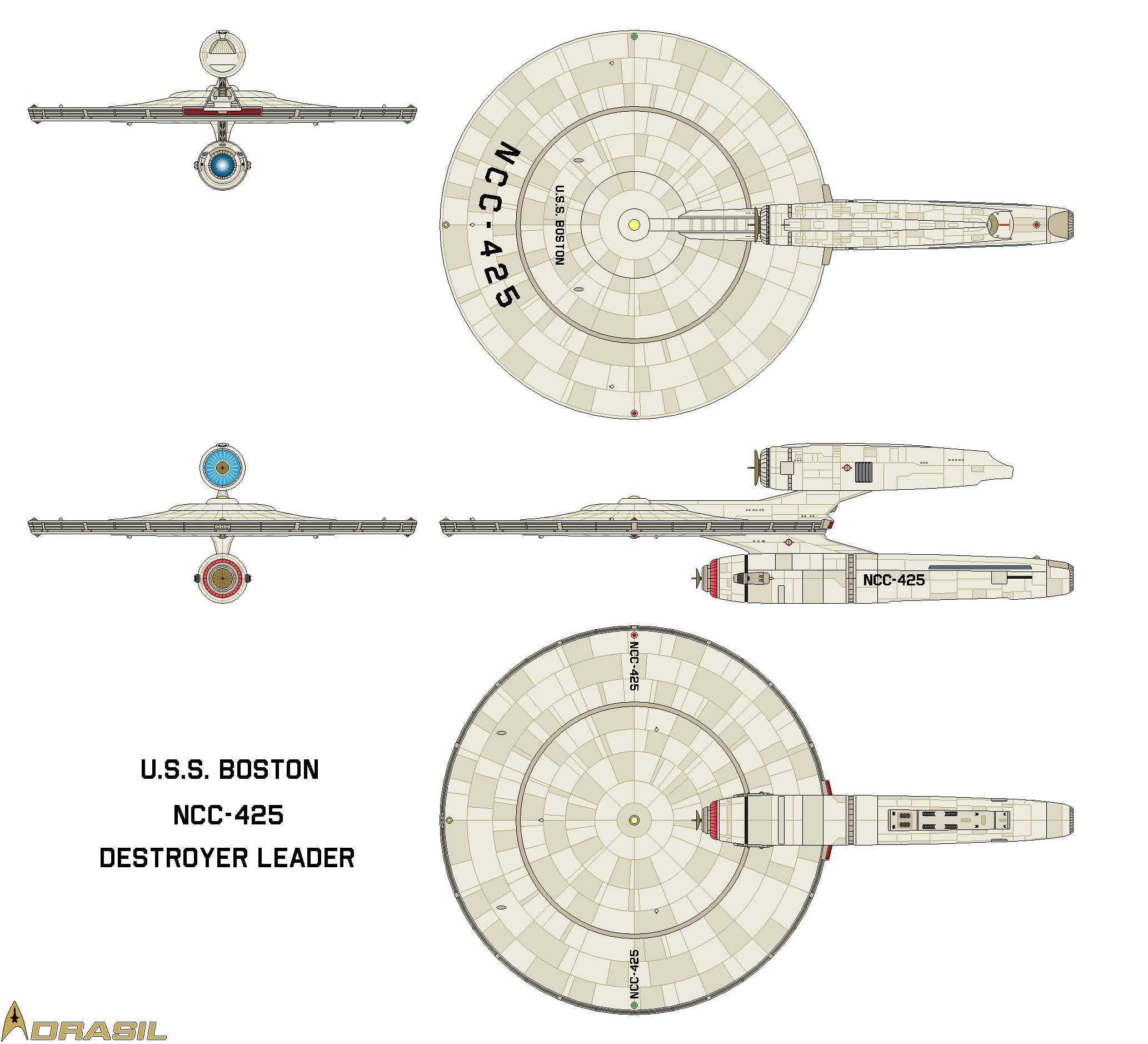HOME | DD
 RevancheRM — Boston subclass destroyer leader (2231)
RevancheRM — Boston subclass destroyer leader (2231)

#starfleet #startrekstarship #timosaloniemi
Published: 2019-08-31 14:42:59 +0000 UTC; Views: 1524; Favourites: 18; Downloads: 20
Redirect to original
Description
The Syracuse class destroyer and its subclasses (Saladin, Boston, Einstein, Siva, Siva Flight II, Pompey, Pompey (w/Q-Pod), Pompey (w/Torpedo Pod), Pompey (w/Sensor Pod), Einstein Flight II, Siva Flight III, Siva Flight III (upgrade)) are Part 3 of the Project Starship series.Image provided by: adrasil
Original inspirations from: Star Trek II: The Wrath of Khan, Franz Joseph, Star Trek (2009), Star Trek: Axanar
Incorporating parts built by: captshade & nichodo
History from: Hobbyist's Guide to the UFP Starfleet , by Timo Saloniemi
Variant blueprints: Access via Adrasil's Download button
Featured in: Starship Recognition Manual #292
In 2230, USS Boston (NCC-425), the sixth Syracuse-class destroyer, re-entered drydocks for a radical modification. The weapons pod was removed and a pre-built secondary hull was attached, via a strengthened spinal extension and pylon, to the dorsal side of the saucer. The intention, experimental in nature, was to address some of the shortcomings of the single-nacelle class from which she originated. The class had been faulted—amongst other issues—as being too slow to the “fight”, arriving well behind established task force doctrine. This, along with the ships’ lack of warp maneuverability, was to be addressed by the installation of a considerable amount of command, control, communications, and intelligence (C3I) apparatus that would enable a lead ship to focus on the battle (or other situation) already in progress and bring in the late arrivals (usually operating in formation) at exactly the angle and attitude to instantaneous advantage.
Typically, in blue navies of old, a destroyer leader was a destroyer of larger displacement than other similarly-designated warships with which it operated, usually significantly better armed and/or armored, but still fulfilling the role of capital ship engagement. However, Star Fleet chose the appellation “leader” literally, by providing dedicated and precise combat control for generally three other Syracuse destroyers nominally assigned to a specific task force, when that task force could not be expected to “spare the horses” in order to allow the slower ships to maintain the larger formation. The removal of the primary weapon for a destroyer, the torpedo launchers, was seen as necessary in order to provide the deemed level of battlespace awareness for the delayed entrants. Instead of designing an entire new class, seen as throwing additional credits at an unplanned tactical shortfall, the Boston, Drona (NCC-431), and Rahman (NCC-434) were selected to step out of their original roles and take on the compensatory one of guiding their sisters.
The modification, surprisingly, had not decreased the ships’ original warp performance, though it did have a significant impulse maneuverability penalty. This, along with the “de-fanging” of the main weapons systems, usually meant the destroyer leader held station outside or orbited the battle, continuing to provide battlespace data updates to the friendly combatants. The addition of a useful load of auxiliary craft (18 light or 6 heavy shuttles, 2 shuttlepods, and 4 work pods) also allowed the Boston subclass ships to provide search, rescue, recovery, and repair capabilities both during and in the aftermath of a confrontation.
Would you like to learn more about this class of ship? Download the free Hobbyist's Guide to the UFP Starfleet , a three-volume, 1236-page history of space flight, by Timo Saloniemi.
For an extremely rich gallery of Star Trek starships and vessels from other universes, check out my partner, adrasil , here on DeviantArts.

























